Asus ZenBook S 16 OLED laptop review: Premiere for Ryzen AI 9 365 and Radeon 880M
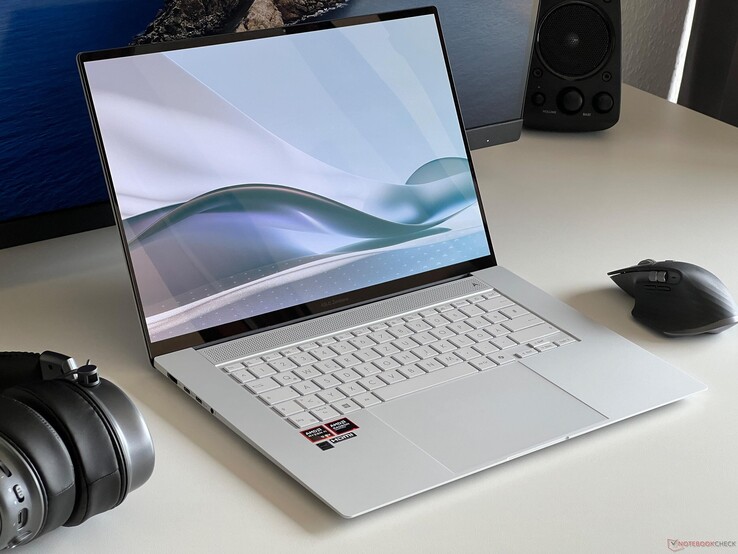
The variant of the ZenBook S 16 that we reviewed goes by the model name UM5606WA and is currently available for around 1,700 Euros (~$1886), which is quite steep considering the performance on offer. At this price, Asus packs the aforementioned Ryzen AI 9 365 including Radeon 880M, with 24 GB of fast LPDDR5X memory (not expandable) and a 1 TB NVMe SSD under the hood. The generated images are displayed on a glossy OLED panel in 16:10 format, which has a relatively high resolution of 2,880 x 1,800 pixels, HDR capability and is specified at 120 Hz. The operating system is Windows 11 Home.
The ZenBook S 16's main competitors are laptops with Intel's Core Ultra, such as the Samsung Galaxy Book4 Pro 16 (7 155H & Arc 8). For better classification, there are also two laptops from the Ryzen 7000 and Ryzen 8000 series in the comparison tables, which are based on the old Radeon 780M and have a similar TDP to the Samsung computer (Lenovo ThinkPad T16 G2 & HP Envy x360 2-in-1 16). The photos in the article are from the identical ZenBook S 16 with Ryzen AI 9 HX 370 and Radeon 890M, which was recently tested (only the color tone differs slightly).
Possible competitors in comparison
Rating | Version | Date | Model | Weight | Height | Size | Resolution | Price |
|---|---|---|---|---|---|---|---|---|
| 84.1 % | v8 | 09 / 2024 | Asus Zenbook S 16 UM5606WA-RK052W Ryzen AI 9 365, Radeon 880M | 1.5 kg | 12.9 mm | 16.00" | 2880x1800 | |
| 84.7 % | v8 | 07 / 2024 | Asus Zenbook S 16 UM5606-RK333W Ryzen AI 9 HX 370, Radeon 890M | 1.5 kg | 12.9 mm | 16.00" | 2880x1800 | |
| 88.9 % v7 (old) | v7 (old) | 04 / 2024 | Samsung Galaxy Book4 Pro 16 Ultra 7 155H, Arc 8-Core | 1.5 kg | 12.5 mm | 16.00" | 2880x1800 | |
| 87.2 % v7 (old) | v7 (old) | 05 / 2024 | HP Envy x360 2-in-1 16-ad0097nr R7 8840HS, Radeon 780M | 1.8 kg | 18.3 mm | 16.00" | 2880x1800 | |
| 89.9 % v7 (old) | v7 (old) | 05 / 2024 | Lenovo ThinkPad T16 G2 21K70035GE R7 7840U, Radeon 780M | 1.8 kg | 23.8 mm | 16.00" | 1920x1200 |
Note: We have recently updated our rating system and the results of version 8 are not comparable with the results of version 7. Further information can be found here available here.
Case
The 16-incher impresses with an extremely stylish casing, which according to the manufacturer is made of ceramic (Asus uses the marketing term cerium aluminum). Despite the low height of just 1.3 cm (~0.5 in), the matte surfaces are surprisingly stable. Only the touchpad and the middle section of the keyboard can be bent noticeably when more pressure is applied. A weight of 1.5 kg (~3.3 lb) is also quite low in the 16-inch class and allows for comfortable transportation. There is also a very compact 65-watt power supply, which weighs less than 200 grams (~7 oz) with the cable, but gets quite warm during operation.
In general, there is nothing to complain about the workmanship of the ZenBook S 16. All elements of the test device fit together cleanly. Although the hinges only allow an opening angle of approx. 135°, they make a tight impression, although a one-handed opening is still possible.
Equipment
Even though we would have liked an additional USB-A port, the connectivity is solid overall and, above all, modern. Of the three available USB ports, the two Type-C interfaces support USB 4 including Power Delivery and DisplayPort. There is also a combined audio connection, an HDMI 2.1 port and an extremely fast SD card reader.
The speed of the soldered Wi-Fi 7 chip (Mediatek MT7925) is very good, especially for reception.
The webcam delivers - as almost all notebooks do - rather standard fare. In addition to the color fidelity, the image sharpness could also be better.
From an upgrade perspective, the device is disappointing. WLAN and RAM are onboard as mentioned, only the SSD is plugged in and therefore replaceable, whereby the ZenBook S 16 only offers a single M.2 slot, which is not a brilliant achievement in the 16-inch segment.
The packaging is largely made of cardboard. The notebook itself is wrapped in paper foil. Plastic is only used for the power supply unit.
| SD Card Reader | |
| average JPG Copy Test (av. of 3 runs) | |
| Asus Zenbook S 16 UM5606WA-RK052W (AV PRO microSD 128 GB V60) | |
| Asus Zenbook S 16 UM5606-RK333W (Angelbird AV Pro V60) | |
| Average of class Multimedia (21.1 - 198, n=41, last 2 years) | |
| Samsung Galaxy Book4 Pro 16 (Angelbird AV Pro V60) | |
| maximum AS SSD Seq Read Test (1GB) | |
| Asus Zenbook S 16 UM5606WA-RK052W (AV PRO microSD 128 GB V60) | |
| Asus Zenbook S 16 UM5606-RK333W (Angelbird AV Pro V60) | |
| Average of class Multimedia (27.4 - 262, n=41, last 2 years) | |
| Samsung Galaxy Book4 Pro 16 (Angelbird AV Pro V60) | |
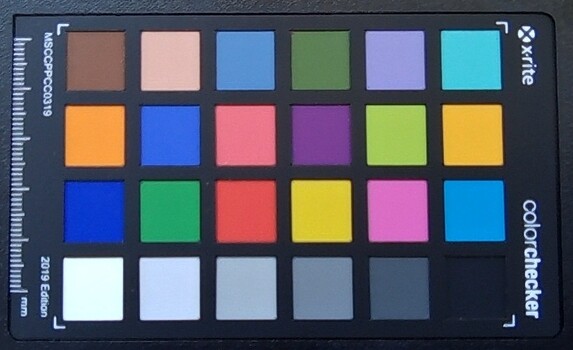
Input devices
The ZenBook S 16 has good (keyboard) to very good (touchpad) input devices. The keyboard could be a bit crisper for the author's taste, but otherwise offers a good typing experience. While most of the keys are more than adequately sized, Asus resorts to a rather meagre size for the F-row and the directional arrows. The layout is also not quite optimal, as the power key, for example, has simply been integrated into the main block. There are plus points for the multi-level adjustable lighting.
The touchpad impresses with its generous dimensions of just under 15 x 10 cm (~5.9 x 3.9), good gliding properties and convincing precision. On the other hand, the click surfaces are rather rickety, both acoustically and haptically.
Display
The model designation of the OLED panel is the same as the already tested ZenBook S 16 (ATNA60CL10-0), which means that most of the values are very similar.
| |||||||||||||||||||||||||
Brightness Distribution: 98 %
Center on Battery: 391 cd/m²
Contrast: 19550:1 (Black: 0.02 cd/m²)
ΔE ColorChecker Calman: 1.42 | ∀{0.5-29.43 Ø4.78}
calibrated: 1.49
ΔE Greyscale Calman: 1.5 | ∀{0.09-98 Ø5}
94.6% AdobeRGB 1998 (Argyll 3D)
100% sRGB (Argyll 3D)
99.8% Display P3 (Argyll 3D)
Gamma: 2.199
CCT: 6684 K
| Asus Zenbook S 16 UM5606WA-RK052W ATNA60CL10-0, OLED, 2880x1800, 16", 120 Hz | Asus Zenbook S 16 UM5606-RK333W ATNA60CL10-0, OLED, 2880x1800, 16", 120 Hz | Samsung Galaxy Book4 Pro 16 ATNA60CL07-0, OLED, 2880x1800, 16", 120 Hz | HP Envy x360 2-in-1 16-ad0097nr Samsung SDC41A6, OLED, 2880x1800, 16", 120 Hz | Lenovo ThinkPad T16 G2 21K70035GE B160UAN01.K, IPS LED, 1920x1200, 16", Hz | |
|---|---|---|---|---|---|
| Display | 0% | 1% | 1% | -15% | |
| Display P3 Coverage (%) | 99.8 | 99.9 0% | 99.5 0% | 99.6 0% | 75.9 -24% |
| sRGB Coverage (%) | 100 | 100 0% | 100 0% | 100 0% | 98.2 -2% |
| AdobeRGB 1998 Coverage (%) | 94.6 | 95.6 1% | 97.5 3% | 96.5 2% | 77.2 -18% |
| Response Times | -16% | -37% | -74% | -7242% | |
| Response Time Grey 50% / Grey 80% * (ms) | 0.4 ? | 0.56 ? -40% | 0.64 ? -60% | 0.8 ? -100% | 40.8 ? -10100% |
| Response Time Black / White * (ms) | 0.6 ? | 0.65 ? -8% | 0.68 ? -13% | 0.89 ? -48% | 26.9 ? -4383% |
| PWM Frequency (Hz) | 480 | 480 | 240 ? | 491.8 ? | |
| PWM Amplitude * (%) | 30 | 30 -0% | |||
| Screen | 26% | 15% | -23% | -215% | |
| Brightness middle (cd/m²) | 391 | 407 4% | 385 -2% | 399.4 2% | 446 14% |
| Brightness (cd/m²) | 391 | 405 4% | 391 0% | 405 4% | 425 9% |
| Brightness Distribution (%) | 98 | 97 -1% | 97 -1% | 98 0% | 91 -7% |
| Black Level * (cd/m²) | 0.02 | 0.02 -0% | 0.28 -1300% | ||
| Contrast (:1) | 19550 | 20350 4% | 1593 -92% | ||
| Colorchecker dE 2000 * | 1.42 | 0.6 58% | 1.1 23% | 4.05 -185% | 3.7 -161% |
| Colorchecker dE 2000 max. * | 4.69 | 1.2 74% | 1.8 62% | 6.69 -43% | 8.8 -88% |
| Colorchecker dE 2000 calibrated * | 1.49 | 1.02 32% | 1.6 -7% | ||
| Greyscale dE 2000 * | 1.5 | 0.5 67% | 1.4 7% | 1.1 27% | 6 -300% |
| Gamma | 2.199 100% | 2.2 100% | 2.24 98% | 2.27 97% | 2.2 100% |
| CCT | 6684 97% | 6453 101% | 6444 101% | 6419 101% | 6499 100% |
| Total Average (Program / Settings) | 3% /
12% | -7% /
2% | -32% /
-26% | -2491% /
-1176% |
* ... smaller is better
In SDR mode, the 400 cd/m² specified by Asus is roughly achieved, which is more than sufficient for most indoor areas, but is already borderline for outdoor use due to the highly reflective surface.
As is typical for OLEDs, there is nothing to complain about when it comes to black levels and contrast. Compared to a classic IPS panel, the picture appears much more powerful and saturated. In addition, the colors are clean, as our CalMAN measurements show.
Display Response Times
| ↔ Response Time Black to White | ||
|---|---|---|
| 0.6 ms ... rise ↗ and fall ↘ combined | ↗ 0.3 ms rise | |
| ↘ 0.3 ms fall | ||
| The screen shows very fast response rates in our tests and should be very well suited for fast-paced gaming. In comparison, all tested devices range from 0.1 (minimum) to 240 (maximum) ms. » 1 % of all devices are better. This means that the measured response time is better than the average of all tested devices (20.2 ms). | ||
| ↔ Response Time 50% Grey to 80% Grey | ||
| 0.4 ms ... rise ↗ and fall ↘ combined | ↗ 0.3 ms rise | |
| ↘ 0.1 ms fall | ||
| The screen shows very fast response rates in our tests and should be very well suited for fast-paced gaming. In comparison, all tested devices range from 0.165 (minimum) to 636 (maximum) ms. » 0 % of all devices are better. This means that the measured response time is better than the average of all tested devices (31.6 ms). | ||
Screen Flickering / PWM (Pulse-Width Modulation)
| Screen flickering / PWM detected | 480 Hz Amplitude: 30 % | ||
The display backlight flickers at 480 Hz (worst case, e.g., utilizing PWM) . The frequency of 480 Hz is relatively high, so most users sensitive to PWM should not notice any flickering. However, there are reports that some users are still sensitive to PWM at 500 Hz and above, so be aware. In comparison: 53 % of all tested devices do not use PWM to dim the display. If PWM was detected, an average of 8108 (minimum: 5 - maximum: 343500) Hz was measured. | |||
Performance
In terms of performance, the ZenBook S 16 makes itself comfortable in the mid-range of multimedia and office notebooks. 24 GB of RAM should be enough for most users for years to come. The 1 TB SSD can be replaced with a larger model if required.
Test conditions
Four different fan modes are available in the pre-installed MyAsus app. Analogous to the other ZenBook S 16 - our measurements are based on the standard profile, as the 3D performance hardly increases at all with the stronger profiles, but the noise development increases noticeably. As expected, it is quietest in whisper mode, naturally at the expense of speed (see table).
| Cyberpunk 2077 (FHD/Ultra) | Whisper | Standard | Performance | Full speed |
|---|---|---|---|---|
| Noise | 32 dB(A) | 36 dB(A) | 43 dB(A) | 44 dB(A) |
| Performance | 14 fps | 20 fps | 20 fps | 20 fps |
Processor
In contrast to the Ryzen AI 9 HX 370, the AI 9 365 "only" contains 10 instead of 12 cores, which leads to 20 instead of 24 simultaneous threads including SMT. To enable the slim line of the chassis, Asus uses a relatively low TDP of 28 watts PL1 and 33 watts PL2 in both cases, which means restrictions in terms of maximum performance. In the Cinebench R15 loop, the AI 9 365 is overtaken by both the Ryzen 7 8840HS as well as the Ryzen 7 7840U which also deliver even more consistent results in their notebooks.
However, if you take all CPU benchmarks together, the new generation is slightly ahead. According to our performance rating, the AI 9 HX 370 wins by just under 16%, while the Core Ultra 7 155H is only slightly faster.
Cinebench R15 Multi Endurance test
* ... smaller is better
AIDA64: FP32 Ray-Trace | FPU Julia | CPU SHA3 | CPU Queen | FPU SinJulia | FPU Mandel | CPU AES | CPU ZLib | FP64 Ray-Trace | CPU PhotoWorxx
| Performance rating | |
| Average AMD Ryzen AI 9 365 | |
| Asus Zenbook S 16 UM5606-RK333W | |
| Lenovo ThinkPad T16 G2 21K70035GE | |
| HP Envy x360 2-in-1 16-ad0097nr | |
| Average of class Multimedia | |
| Samsung Galaxy Book4 Pro 16 | |
| Asus Zenbook S 16 UM5606WA-RK052W | |
| AIDA64 / FP32 Ray-Trace | |
| Average AMD Ryzen AI 9 365 (17096 - 32742, n=7) | |
| Asus Zenbook S 16 UM5606-RK333W | |
| Lenovo ThinkPad T16 G2 21K70035GE | |
| HP Envy x360 2-in-1 16-ad0097nr | |
| Asus Zenbook S 16 UM5606WA-RK052W | |
| Average of class Multimedia (2214 - 50388, n=58, last 2 years) | |
| Samsung Galaxy Book4 Pro 16 | |
| AIDA64 / FPU Julia | |
| Average AMD Ryzen AI 9 365 (61976 - 126955, n=7) | |
| Asus Zenbook S 16 UM5606-RK333W | |
| Lenovo ThinkPad T16 G2 21K70035GE | |
| HP Envy x360 2-in-1 16-ad0097nr | |
| Average of class Multimedia (12867 - 201874, n=59, last 2 years) | |
| Samsung Galaxy Book4 Pro 16 | |
| Asus Zenbook S 16 UM5606WA-RK052W | |
| AIDA64 / CPU SHA3 | |
| Average AMD Ryzen AI 9 365 (2951 - 5178, n=7) | |
| Asus Zenbook S 16 UM5606-RK333W | |
| Lenovo ThinkPad T16 G2 21K70035GE | |
| HP Envy x360 2-in-1 16-ad0097nr | |
| Average of class Multimedia (653 - 8623, n=59, last 2 years) | |
| Samsung Galaxy Book4 Pro 16 | |
| Asus Zenbook S 16 UM5606WA-RK052W | |
| AIDA64 / CPU Queen | |
| HP Envy x360 2-in-1 16-ad0097nr | |
| Lenovo ThinkPad T16 G2 21K70035GE | |
| Average AMD Ryzen AI 9 365 (85333 - 93045, n=7) | |
| Asus Zenbook S 16 UM5606WA-RK052W | |
| Asus Zenbook S 16 UM5606-RK333W | |
| Samsung Galaxy Book4 Pro 16 | |
| Average of class Multimedia (13483 - 181505, n=59, last 2 years) | |
| AIDA64 / FPU SinJulia | |
| Asus Zenbook S 16 UM5606-RK333W | |
| Average AMD Ryzen AI 9 365 (11586 - 16342, n=7) | |
| Lenovo ThinkPad T16 G2 21K70035GE | |
| HP Envy x360 2-in-1 16-ad0097nr | |
| Asus Zenbook S 16 UM5606WA-RK052W | |
| Average of class Multimedia (1240 - 28794, n=59, last 2 years) | |
| Samsung Galaxy Book4 Pro 16 | |
| AIDA64 / FPU Mandel | |
| Average AMD Ryzen AI 9 365 (33409 - 67374, n=7) | |
| Asus Zenbook S 16 UM5606-RK333W | |
| Lenovo ThinkPad T16 G2 21K70035GE | |
| HP Envy x360 2-in-1 16-ad0097nr | |
| Average of class Multimedia (6395 - 105740, n=58, last 2 years) | |
| Samsung Galaxy Book4 Pro 16 | |
| Asus Zenbook S 16 UM5606WA-RK052W | |
| AIDA64 / CPU AES | |
| Lenovo ThinkPad T16 G2 21K70035GE | |
| Average of class Multimedia (13243 - 169946, n=59, last 2 years) | |
| HP Envy x360 2-in-1 16-ad0097nr | |
| Average AMD Ryzen AI 9 365 (47468 - 99502, n=7) | |
| Samsung Galaxy Book4 Pro 16 | |
| Asus Zenbook S 16 UM5606-RK333W | |
| Asus Zenbook S 16 UM5606WA-RK052W | |
| AIDA64 / CPU ZLib | |
| Average AMD Ryzen AI 9 365 (706 - 1343, n=7) | |
| Asus Zenbook S 16 UM5606-RK333W | |
| Average of class Multimedia (167.2 - 2022, n=59, last 2 years) | |
| Samsung Galaxy Book4 Pro 16 | |
| Lenovo ThinkPad T16 G2 21K70035GE | |
| HP Envy x360 2-in-1 16-ad0097nr | |
| Asus Zenbook S 16 UM5606WA-RK052W | |
| AIDA64 / FP64 Ray-Trace | |
| Average AMD Ryzen AI 9 365 (9061 - 17848, n=7) | |
| Asus Zenbook S 16 UM5606-RK333W | |
| Lenovo ThinkPad T16 G2 21K70035GE | |
| HP Envy x360 2-in-1 16-ad0097nr | |
| Average of class Multimedia (1014 - 26875, n=59, last 2 years) | |
| Asus Zenbook S 16 UM5606WA-RK052W | |
| Samsung Galaxy Book4 Pro 16 | |
| AIDA64 / CPU PhotoWorxx | |
| Samsung Galaxy Book4 Pro 16 | |
| Average AMD Ryzen AI 9 365 (47654 - 53550, n=7) | |
| Asus Zenbook S 16 UM5606-RK333W | |
| Asus Zenbook S 16 UM5606WA-RK052W | |
| Average of class Multimedia (12860 - 65787, n=59, last 2 years) | |
| Lenovo ThinkPad T16 G2 21K70035GE | |
| HP Envy x360 2-in-1 16-ad0097nr | |
System performance
The two variants of the ZenBook S 16 offer the best system performance in the test field. The system boots, reacts and loads pleasantly quickly. The speed of the working memory is also impressive.
CrossMark: Overall | Productivity | Creativity | Responsiveness
WebXPRT 3: Overall
WebXPRT 4: Overall
Mozilla Kraken 1.1: Total
| PCMark 10 / Score | |
| Asus Zenbook S 16 UM5606-RK333W | |
| Average AMD Ryzen AI 9 365, AMD Radeon 880M (7045 - 7641, n=5) | |
| Asus Zenbook S 16 UM5606WA-RK052W | |
| Average of class Multimedia (4325 - 10386, n=55, last 2 years) | |
| HP Envy x360 2-in-1 16-ad0097nr | |
| Samsung Galaxy Book4 Pro 16 | |
| Lenovo ThinkPad T16 G2 21K70035GE | |
| PCMark 10 / Essentials | |
| Samsung Galaxy Book4 Pro 16 | |
| Asus Zenbook S 16 UM5606-RK333W | |
| Average AMD Ryzen AI 9 365, AMD Radeon 880M (10421 - 11140, n=5) | |
| HP Envy x360 2-in-1 16-ad0097nr | |
| Average of class Multimedia (8025 - 12420, n=55, last 2 years) | |
| Asus Zenbook S 16 UM5606WA-RK052W | |
| Lenovo ThinkPad T16 G2 21K70035GE | |
| PCMark 10 / Productivity | |
| Asus Zenbook S 16 UM5606-RK333W | |
| Asus Zenbook S 16 UM5606WA-RK052W | |
| Average AMD Ryzen AI 9 365, AMD Radeon 880M (9841 - 10293, n=5) | |
| HP Envy x360 2-in-1 16-ad0097nr | |
| Average of class Multimedia (7323 - 16647, n=55, last 2 years) | |
| Lenovo ThinkPad T16 G2 21K70035GE | |
| Samsung Galaxy Book4 Pro 16 | |
| PCMark 10 / Digital Content Creation | |
| Average AMD Ryzen AI 9 365, AMD Radeon 880M (8973 - 10976, n=5) | |
| Asus Zenbook S 16 UM5606-RK333W | |
| Average of class Multimedia (3651 - 16240, n=55, last 2 years) | |
| Asus Zenbook S 16 UM5606WA-RK052W | |
| Samsung Galaxy Book4 Pro 16 | |
| HP Envy x360 2-in-1 16-ad0097nr | |
| Lenovo ThinkPad T16 G2 21K70035GE | |
| CrossMark / Overall | |
| Average of class Multimedia (866 - 2426, n=63, last 2 years) | |
| Samsung Galaxy Book4 Pro 16 | |
| Asus Zenbook S 16 UM5606-RK333W | |
| Average AMD Ryzen AI 9 365, AMD Radeon 880M (1658 - 1743, n=4) | |
| HP Envy x360 2-in-1 16-ad0097nr | |
| Lenovo ThinkPad T16 G2 21K70035GE | |
| CrossMark / Productivity | |
| Samsung Galaxy Book4 Pro 16 | |
| Average of class Multimedia (913 - 2344, n=63, last 2 years) | |
| Asus Zenbook S 16 UM5606-RK333W | |
| HP Envy x360 2-in-1 16-ad0097nr | |
| Average AMD Ryzen AI 9 365, AMD Radeon 880M (1508 - 1599, n=4) | |
| Lenovo ThinkPad T16 G2 21K70035GE | |
| CrossMark / Creativity | |
| Average AMD Ryzen AI 9 365, AMD Radeon 880M (2044 - 2074, n=4) | |
| Asus Zenbook S 16 UM5606-RK333W | |
| Average of class Multimedia (907 - 2820, n=63, last 2 years) | |
| Samsung Galaxy Book4 Pro 16 | |
| HP Envy x360 2-in-1 16-ad0097nr | |
| Lenovo ThinkPad T16 G2 21K70035GE | |
| CrossMark / Responsiveness | |
| Samsung Galaxy Book4 Pro 16 | |
| Average of class Multimedia (605 - 2094, n=63, last 2 years) | |
| Asus Zenbook S 16 UM5606-RK333W | |
| Lenovo ThinkPad T16 G2 21K70035GE | |
| HP Envy x360 2-in-1 16-ad0097nr | |
| Average AMD Ryzen AI 9 365, AMD Radeon 880M (1124 - 1360, n=4) | |
| WebXPRT 3 / Overall | |
| Average of class Multimedia (136.4 - 545, n=66, last 2 years) | |
| Asus Zenbook S 16 UM5606-RK333W | |
| Average AMD Ryzen AI 9 365, AMD Radeon 880M (309 - 336, n=4) | |
| HP Envy x360 2-in-1 16-ad0097nr | |
| Samsung Galaxy Book4 Pro 16 | |
| Lenovo ThinkPad T16 G2 21K70035GE | |
| WebXPRT 4 / Overall | |
| Average of class Multimedia (167.3 - 384, n=65, last 2 years) | |
| Average AMD Ryzen AI 9 365, AMD Radeon 880M (255 - 330, n=6) | |
| Asus Zenbook S 16 UM5606-RK333W | |
| Samsung Galaxy Book4 Pro 16 | |
| Asus Zenbook S 16 UM5606WA-RK052W | |
| Asus Zenbook S 16 UM5606WA-RK052W | |
| HP Envy x360 2-in-1 16-ad0097nr | |
| Lenovo ThinkPad T16 G2 21K70035GE | |
| Mozilla Kraken 1.1 / Total | |
| Lenovo ThinkPad T16 G2 21K70035GE | |
| HP Envy x360 2-in-1 16-ad0097nr | |
| Samsung Galaxy Book4 Pro 16 | |
| Average of class Multimedia (228 - 835, n=69, last 2 years) | |
| Asus Zenbook S 16 UM5606WA-RK052W | |
| Asus Zenbook S 16 UM5606WA-RK052W | |
| Average AMD Ryzen AI 9 365, AMD Radeon 880M (430 - 456, n=6) | |
| Asus Zenbook S 16 UM5606-RK333W | |
* ... smaller is better
| PCMark 10 Score | 7045 points | |
Help | ||
| AIDA64 / Memory Copy | |
| Samsung Galaxy Book4 Pro 16 | |
| Average AMD Ryzen AI 9 365 (87648 - 94710, n=7) | |
| Asus Zenbook S 16 UM5606-RK333W | |
| Asus Zenbook S 16 UM5606WA-RK052W | |
| Average of class Multimedia (21158 - 109252, n=59, last 2 years) | |
| HP Envy x360 2-in-1 16-ad0097nr | |
| Lenovo ThinkPad T16 G2 21K70035GE | |
| AIDA64 / Memory Read | |
| Asus Zenbook S 16 UM5606-RK333W | |
| Average AMD Ryzen AI 9 365 (89012 - 104349, n=7) | |
| Samsung Galaxy Book4 Pro 16 | |
| Asus Zenbook S 16 UM5606WA-RK052W | |
| Average of class Multimedia (19699 - 125604, n=59, last 2 years) | |
| Lenovo ThinkPad T16 G2 21K70035GE | |
| HP Envy x360 2-in-1 16-ad0097nr | |
| AIDA64 / Memory Write | |
| Asus Zenbook S 16 UM5606WA-RK052W | |
| Asus Zenbook S 16 UM5606-RK333W | |
| Average AMD Ryzen AI 9 365 (93627 - 106646, n=7) | |
| HP Envy x360 2-in-1 16-ad0097nr | |
| Lenovo ThinkPad T16 G2 21K70035GE | |
| Samsung Galaxy Book4 Pro 16 | |
| Average of class Multimedia (17733 - 117933, n=59, last 2 years) | |
| AIDA64 / Memory Latency | |
| Lenovo ThinkPad T16 G2 21K70035GE | |
| Average of class Multimedia (7 - 535, n=59, last 2 years) | |
| Samsung Galaxy Book4 Pro 16 | |
| HP Envy x360 2-in-1 16-ad0097nr | |
| Asus Zenbook S 16 UM5606WA-RK052W | |
| Average AMD Ryzen AI 9 365 (103.6 - 129.8, n=7) | |
| Asus Zenbook S 16 UM5606-RK333W | |
* ... smaller is better
DPC latencies
| DPC Latencies / LatencyMon - interrupt to process latency (max), Web, Youtube, Prime95 | |
| Asus Zenbook S 16 UM5606WA-RK052W | |
| Samsung Galaxy Book4 Pro 16 | |
| HP Envy x360 2-in-1 16-ad0097nr | |
| Lenovo ThinkPad T16 G2 21K70035GE | |
* ... smaller is better
Mass storage
The mass storage is neither lame nor particularly fast, but ranks in the midfield. The built-in NVMe-based Micron 2400 delivers stable performance even under prolonged use, as our DiskSpd loop proves.
* ... smaller is better
Continuous reading performance: DiskSpd Read Loop, Queue Depth 8
Graphics card
The evaluation of the Radeon 880M, which only has 768 instead of 1024 shader units compared to the Radeon 890M, is not easy, as Asus relies on a fairly moderate TDP of the Ryzen AI 9, as explained.
In the synthetic graphics tests, it performs only slightly faster than its predecessor, the Radeon 780M, when almost identical PL1 values are applied. This result is somewhat sobering. For the Intel Arc 8 and the Radeon 890M, the final result is approximately plus 10%. With a higher TDP, the new Radeons could perform correspondingly better. A good example of this is the VivoBook S 14 OLED, where Asus sets 54 watts PL1 and 65 watts PL2, but the laptop is still quite economical in normal operation and achieves excellent battery runtimes.
| 3DMark 06 Standard Score | 39128 points | |
| 3DMark 11 Performance | 12375 points | |
| 3DMark Ice Storm Standard Score | 167077 points | |
| 3DMark Cloud Gate Standard Score | 29760 points | |
| 3DMark Fire Strike Score | 6861 points | |
| 3DMark Time Spy Score | 3272 points | |
Help | ||
* ... smaller is better
Gaming performance
While the conclusion to the Radeon 680M and 780M were quite positive at the time, the Radeon 880M is not doing quite as well due to the now much higher hardware requirements of new titles. Demanding games like Alan Wake 2, Horizon Forbidden West and Star Wars Outlaws do not even run smoothly when using 1,920 x 1,080 pixels and low settings. Older and/or less CPU-intensive games such as Far Cry 5, Counter-Strike 2 and F1 24 are still playable in places even with high settings - at least in Full HD.
Accordingly, the Radeon 880M is only suitable for occasional gamers who are willing to reduce settings and resolutions considerably. AMD should also work on the driver in general: Three of the games tested did not want to start at all (Resident Evil 4 Remake, Atlas Fallen & Dragon's Dogma 2). The performance ranking of the gaming benchmarks is similar to the synthetic GPU tests, with the 880M even bringing up the rear here.
| The Witcher 3 - 1920x1080 Ultra Graphics & Postprocessing (HBAO+) | |
| Average of class Multimedia (11 - 121, n=28, last 2 years) | |
| Average AMD Radeon 880M (31 - 34.6, n=2) | |
| Asus Zenbook S 16 UM5606-RK333W | |
| HP Envy x360 2-in-1 16-ad0097nr | |
| Lenovo ThinkPad T16 G2 21K70035GE | |
| Samsung Galaxy Book4 Pro 16 | |
After all, the ZenBook S 16 seems to get along better with the Ryzen AI 9 365 than with the HX 370: In the 30-minute test with Cyberpunk 2077 there were no strange performance drops (see graph).
Cyberpunk 2077 ultra FPS-Diagram
| low | med. | high | ultra | |
|---|---|---|---|---|
| GTA V (2015) | 148.5 | 132.3 | 62.7 | 27.5 |
| Dota 2 Reborn (2015) | 147.1 | 109.3 | 31.1 | 29 |
| Final Fantasy XV Benchmark (2018) | 66.5 | 34.6 | 25.1 | |
| X-Plane 11.11 (2018) | 64.1 | 51.2 | 39.8 | |
| Far Cry 5 (2018) | 76 | 43 | 40 | 37 |
| Strange Brigade (2018) | 156.1 | 64.2 | 53.7 | 44.2 |
| Hogwarts Legacy (2023) | 32.4 | 25 | 19.3 | 12.3 |
| Returnal (2023) | 27 | 26 | 23 | 19 |
| Atomic Heart (2023) | 46.2 | 34 | 20.5 | 15.2 |
| Company of Heroes 3 (2023) | 61.2 | 46.2 | 36.5 | 36 |
| Resident Evil 4 Remake (2023) | 0 game wont start | 0 game wont start | 0 game wont start | 0 game wont start |
| Ratchet & Clank Rift Apart (2023) | 24.8 | 21 | 17.5 | 15.7 |
| Atlas Fallen (2023) | 0 game wont start | 0 game wont start | 0 game wont start | 0 game wont start |
| Armored Core 6 (2023) | 37.1 | 32.7 | 26.1 | 26 |
| The Crew Motorfest (2023) | 32 | 30 | 24 | 20 |
| Lies of P (2023) | 43 | 37.5 | 30.1 | 28.3 |
| Baldur's Gate 3 (2023) | 31.1 | 24.4 | 19.6 | 17.6 |
| Cyberpunk 2077 (2023) | 37.2 | 29.1 | 23.9 | 20 |
| Counter-Strike 2 (2023) | 95 | 70 | 45.6 | 32.7 |
| Assassin's Creed Mirage (2023) | 41 | 35 | 34 | 25 |
| Total War Pharaoh (2023) | 83.3 | 54.6 | 30.8 | 23.4 |
| Lords of the Fallen (2023) | 19.6 | 17.1 | 15.2 | 10.9 |
| Alan Wake 2 (2023) | 15.3 | 13.8 | 12.2 | |
| Call of Duty Modern Warfare 3 2023 (2023) | 56 | 48 | 34 | 31 |
| Avatar Frontiers of Pandora (2023) | 19 | 16 | 14 | 8.3 |
| The Finals (2023) | 60.7 | 43.3 | 38.5 | 28 |
| Ready or Not (2023) | 59.4 | 47.3 | 33.7 | 21.6 |
| Prince of Persia The Lost Crown (2024) | 168.5 | 128.6 | 120.5 | |
| Palworld (2024) | 54.9 | 42.1 | 23.8 | 21.3 |
| Enshrouded (2024) | 18.4 | 17 | 13.8 | 9.73 |
| Helldivers 2 (2024) | 32 | 24.6 | 22.7 | 21.1 |
| Skull & Bones (2024) | 33 | 29 | 23 | 17 |
| Last Epoch (2024) | 53.8 | 41.3 | 34.7 | 24.9 |
| Dragon's Dogma 2 (2024) | 0 game wont start | 0 game wont start | ||
| Horizon Forbidden West (2024) | 18.8 | 16.6 | 12.5 | 12.4 |
| Ghost of Tsushima (2024) | 29.3 | 23.7 | 20.2 | 16 |
| Senua's Saga Hellblade 2 (2024) | 14.6 | 12.3 | 9.2 | |
| F1 24 (2024) | 63 | 53 | 39 | 8 |
| The First Descendant (2024) | 37.6 | 23.4 | 17.3 | 14.7 |
| Once Human (2024) | 36.1 | 25.3 | 22.8 | 20.6 |
| Star Wars Outlaws (2024) | 14.7 | 13.2 | 11.5 | 8.52 |
Emissions
Noise emissions
The background noise is very similar to the more powerful ZenBook S 16. When using the standard mode, we were able to elicit 24 to 26 dB(A) from the 16-inch device in idle mode (the fans often stand still) and 35 to 36 dB(A) under load. These values represent a moderate result and should be acceptable for most buyers. The competition is at a similar level here.
Noise level
| Idle |
| 24 / 25 / 26 dB(A) |
| Load |
| 35 / 36 dB(A) |
 | ||
30 dB silent 40 dB(A) audible 50 dB(A) loud |
||
min: | ||
| Asus Zenbook S 16 UM5606WA-RK052W Ryzen AI 9 365, Radeon 880M | Asus Zenbook S 16 UM5606-RK333W Ryzen AI 9 HX 370, Radeon 890M | Samsung Galaxy Book4 Pro 16 Ultra 7 155H, Arc 8-Core | HP Envy x360 2-in-1 16-ad0097nr R7 8840HS, Radeon 780M | Lenovo ThinkPad T16 G2 21K70035GE R7 7840U, Radeon 780M | |
|---|---|---|---|---|---|
| Noise | -2% | -5% | 7% | 5% | |
| off / environment * (dB) | 24 | 24.7 -3% | 24.6 -3% | 22.9 5% | 24.5 -2% |
| Idle Minimum * (dB) | 24 | 24.7 -3% | 24.6 -3% | 23 4% | 24.5 -2% |
| Idle Average * (dB) | 25 | 24.7 1% | 24.6 2% | 23 8% | 24.5 2% |
| Idle Maximum * (dB) | 26 | 26.4 -2% | 26.4 -2% | 23 12% | 24.5 6% |
| Load Average * (dB) | 35 | 35.7 -2% | 40 -14% | 23.8 32% | 26.6 24% |
| Cyberpunk 2077 ultra * (dB) | 36 | 36.8 -2% | |||
| Load Maximum * (dB) | 36 | 36.8 -2% | 40 -11% | 43.8 -22% | 35.5 1% |
| Witcher 3 ultra * (dB) | 40 | 43.8 | 37.2 |
* ... smaller is better
Temperature
The temperature values are not quite optimal. The two ZenBook models achieve the highest values in the test field - both in idle and load mode. This problem could certainly have been counteracted with a slightly thicker case and a correspondingly larger cooling system, but Asus is fully committed to the slimness trend - whether this makes sense or not.
(-) The maximum temperature on the upper side is 48 °C / 118 F, compared to the average of 36.9 °C / 98 F, ranging from 21.1 to 71 °C for the class Multimedia.
(-) The bottom heats up to a maximum of 53 °C / 127 F, compared to the average of 39.2 °C / 103 F
(+) In idle usage, the average temperature for the upper side is 29.8 °C / 86 F, compared to the device average of 31.3 °C / 88 F.
(-) 3: The average temperature for the upper side is 42.2 °C / 108 F, compared to the average of 31.3 °C / 88 F for the class Multimedia.
(+) The palmrests and touchpad are reaching skin temperature as a maximum (35 °C / 95 F) and are therefore not hot.
(-) The average temperature of the palmrest area of similar devices was 28.7 °C / 83.7 F (-6.3 °C / -11.3 F).
| Asus Zenbook S 16 UM5606WA-RK052W AMD Ryzen AI 9 365, AMD Radeon 880M | Asus Zenbook S 16 UM5606-RK333W AMD Ryzen AI 9 HX 370, AMD Radeon 890M | Samsung Galaxy Book4 Pro 16 Intel Core Ultra 7 155H, Intel Arc 8-Core iGPU | HP Envy x360 2-in-1 16-ad0097nr AMD Ryzen 7 8840HS, AMD Radeon 780M | Lenovo ThinkPad T16 G2 21K70035GE AMD Ryzen 7 7840U, AMD Radeon 780M | |
|---|---|---|---|---|---|
| Heat | 3% | 20% | 12% | 9% | |
| Maximum Upper Side * (°C) | 48 | 46.9 2% | 40.9 15% | 42.6 11% | 48.7 -1% |
| Maximum Bottom * (°C) | 53 | 53.5 -1% | 42.6 20% | 47.8 10% | 52 2% |
| Idle Upper Side * (°C) | 31 | 29.5 5% | 24.5 21% | 27.4 12% | 26.4 15% |
| Idle Bottom * (°C) | 32 | 30.2 6% | 24.8 22% | 27.8 13% | 26.3 18% |
* ... smaller is better
Stress test
Speaker
The sound quality of the ZenBook S 16 is above average, especially considering its low height. However, the bass and maximum volume should be stronger and more intense for an even better audio rating.
Asus Zenbook S 16 UM5606WA-RK052W audio analysis
(±) | speaker loudness is average but good (81 dB)
Bass 100 - 315 Hz
(±) | reduced bass - on average 6.1% lower than median
(±) | linearity of bass is average (7.5% delta to prev. frequency)
Mids 400 - 2000 Hz
(+) | balanced mids - only 1.9% away from median
(+) | mids are linear (3.3% delta to prev. frequency)
Highs 2 - 16 kHz
(+) | balanced highs - only 3% away from median
(+) | highs are linear (6.1% delta to prev. frequency)
Overall 100 - 16.000 Hz
(+) | overall sound is linear (8.1% difference to median)
Compared to same class
» 7% of all tested devices in this class were better, 1% similar, 92% worse
» The best had a delta of 5%, average was 17%, worst was 45%
Compared to all devices tested
» 1% of all tested devices were better, 1% similar, 98% worse
» The best had a delta of 4%, average was 24%, worst was 134%
Samsung Galaxy Book4 Pro 16 audio analysis
(+) | speakers can play relatively loud (83.4 dB)
Bass 100 - 315 Hz
(±) | reduced bass - on average 12.4% lower than median
(±) | linearity of bass is average (11.4% delta to prev. frequency)
Mids 400 - 2000 Hz
(+) | balanced mids - only 4.7% away from median
(+) | mids are linear (4.7% delta to prev. frequency)
Highs 2 - 16 kHz
(+) | balanced highs - only 3.1% away from median
(+) | highs are linear (5.4% delta to prev. frequency)
Overall 100 - 16.000 Hz
(+) | overall sound is linear (12.5% difference to median)
Compared to same class
» 21% of all tested devices in this class were better, 3% similar, 76% worse
» The best had a delta of 5%, average was 17%, worst was 45%
Compared to all devices tested
» 10% of all tested devices were better, 2% similar, 87% worse
» The best had a delta of 4%, average was 24%, worst was 134%
Energy management
Energy consumption
The AI 9 365 variant is a tad more economical than its HX 370 counterpart. 6 to 13 watts in idle mode and 44 to 58 watts under load represent respectable energy efficiency. The Core Ultra 7 system consumes less energy in idle mode and more under load.
| Off / Standby | |
| Idle | |
| Load |
|
Key:
min: | |
| Asus Zenbook S 16 UM5606WA-RK052W Ryzen AI 9 365, Radeon 880M | Asus Zenbook S 16 UM5606-RK333W Ryzen AI 9 HX 370, Radeon 890M | Samsung Galaxy Book4 Pro 16 Ultra 7 155H, Arc 8-Core | HP Envy x360 2-in-1 16-ad0097nr R7 8840HS, Radeon 780M | Lenovo ThinkPad T16 G2 21K70035GE R7 7840U, Radeon 780M | Average of class Multimedia | |
|---|---|---|---|---|---|---|
| Power Consumption | -7% | 16% | -2% | 14% | -41% | |
| Idle Minimum * (Watt) | 6 | 5.4 10% | 3.6 40% | 5 17% | 3.7 38% | 6 ? -0% |
| Idle Average * (Watt) | 7 | 10.5 -50% | 5.7 19% | 6.2 11% | 7.2 -3% | 10.5 ? -50% |
| Idle Maximum * (Watt) | 13 | 10.9 16% | 6.1 53% | 14.7 -13% | 8.7 33% | 12.6 ? 3% |
| Load Average * (Watt) | 44 | 47.8 -9% | 52.5 -19% | 49.9 -13% | 44.1 -0% | 69.3 ? -58% |
| Cyberpunk 2077 ultra * (Watt) | 44.6 | 49.2 -10% | ||||
| Load Maximum * (Watt) | 58 | 58.6 -1% | 64.7 -12% | 65 -12% | 58.2 -0% | 115.2 ? -99% |
| Cyberpunk 2077 ultra external monitor * (Watt) | 46.7 | |||||
| Witcher 3 ultra * (Watt) | 46.6 | 54.5 | 50.9 |
* ... smaller is better
Energy consumption Cyberpunk / Stress test
Energy consumption with external Monitor
Battery life
The runtime of the integrated 78 Wh battery is definitely not bad. Just under 12 hours of Internet surfing via WLAN with brightness reduced to 150 cd/m² marks the best value in the test field. The more expensive ZenBook S 16 lasted over an hour less here.
| Asus Zenbook S 16 UM5606WA-RK052W Ryzen AI 9 365, Radeon 880M, 78 Wh | Asus Zenbook S 16 UM5606-RK333W Ryzen AI 9 HX 370, Radeon 890M, 78 Wh | Samsung Galaxy Book4 Pro 16 Ultra 7 155H, Arc 8-Core, 76 Wh | HP Envy x360 2-in-1 16-ad0097nr R7 8840HS, Radeon 780M, 68 Wh | Lenovo ThinkPad T16 G2 21K70035GE R7 7840U, Radeon 780M, 52.5 Wh | Average of class Multimedia | |
|---|---|---|---|---|---|---|
| Battery runtime | -11% | -11% | -36% | -8% | -6% | |
| WiFi v1.3 (h) | 12 | 10.7 -11% | 10.7 -11% | 7.7 -36% | 11 -8% | 11.3 ? -6% |
| H.264 (h) | 20.1 | 19.1 | 15.8 ? | |||
| Load (h) | 1.8 | 1.7 | 1.9 | 0.9 | 1.653 ? | |
| Reader / Idle (h) | 15.6 | 23.4 ? |
Pros
Cons
Verdict
If you have no problem with the fact that the performance potential of the Ryzen AI 9 365 (or the Radeon 880M) is not fully developed due to the TDP, the ZenBook S 16 UM5606WA is an incredibly stylish and slim all-round notebook for all kinds of applications.
The high-quality-looking casing houses modern ports (including 2x USB 4) and an extremely high-contrast and responsive display - as we know it from OLED panels - although its glossy surface can lead to annoying reflections.
The notebook's good speakers and ample battery life also speak in its favor. We were less impressed by the partially soldered components (RAM, Wi-Fi) and the surface temperatures under load.
Everyone has to decide for themselves whether the estimated price of around 1,700 Euros (~$1886) is justified. For us, it tends to be too high for what is on offer, as the performance increase compared to the last CPU/iGPU generation is limited. It might make more sense to simply opt for an older device.
Intel fans, on the other hand, will find what they are looking for in the Samsung Galaxy Book4 Pro 16 with Core Ultra 7 155H which, however, costs even more.
Price and availability
The tested Asus ZenBook S 16 OLED UM5606WA is available from various online stores for around 1,700 Euros (~$1886) (e.g. Playox).
Note: We have recently updated our rating system and the results of version 8 are not comparable with the results of version 7. Further information can be found here available here.
Asus Zenbook S 16 UM5606WA-RK052W
- 09/03/2024 v8
Florian Glaser
Transparency
The selection of devices to be reviewed is made by our editorial team. The test sample was provided to the author as a loan by the manufacturer or retailer for the purpose of this review. The lender had no influence on this review, nor did the manufacturer receive a copy of this review before publication. There was no obligation to publish this review. As an independent media company, Notebookcheck is not subjected to the authority of manufacturers, retailers or publishers.
This is how Notebookcheck is testing
Every year, Notebookcheck independently reviews hundreds of laptops and smartphones using standardized procedures to ensure that all results are comparable. We have continuously developed our test methods for around 20 years and set industry standards in the process. In our test labs, high-quality measuring equipment is utilized by experienced technicians and editors. These tests involve a multi-stage validation process. Our complex rating system is based on hundreds of well-founded measurements and benchmarks, which maintains objectivity. Further information on our test methods can be found here.




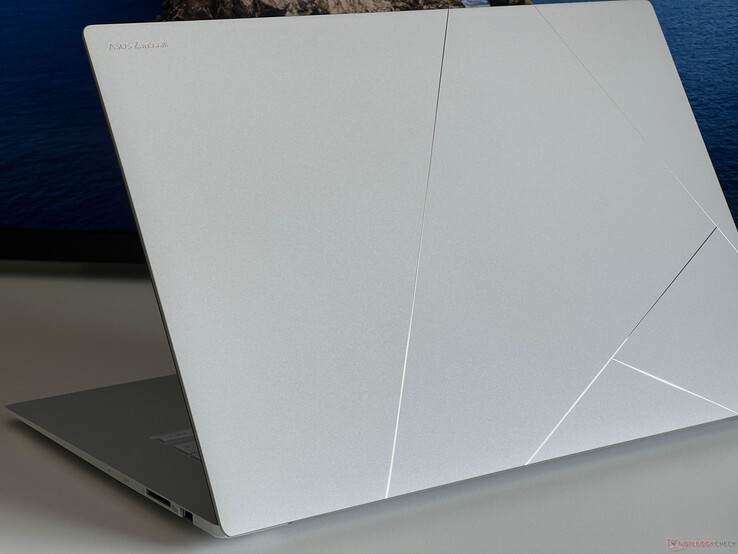









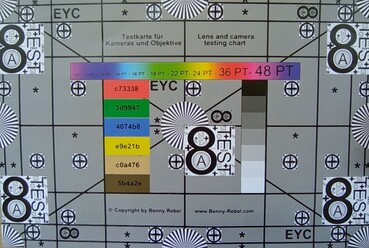

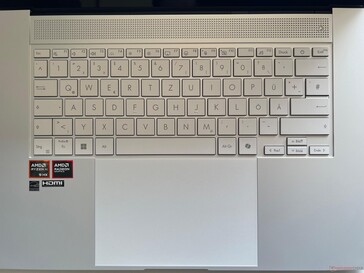
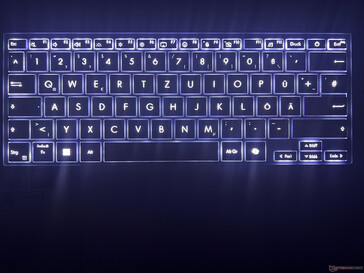
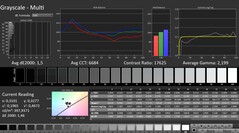

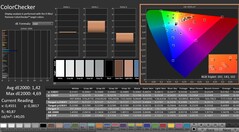

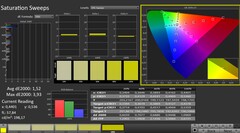
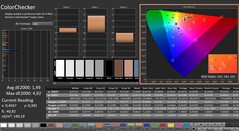
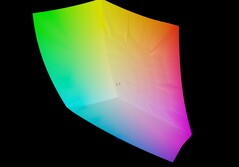
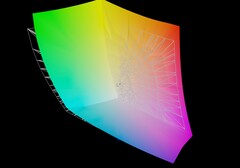
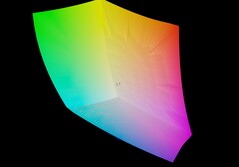

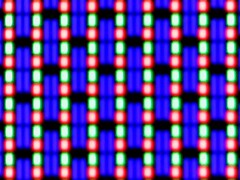
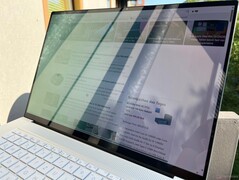
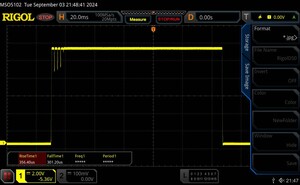
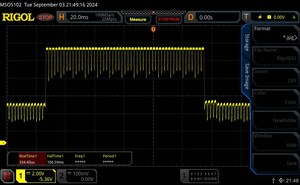
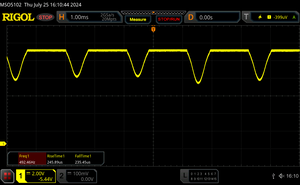
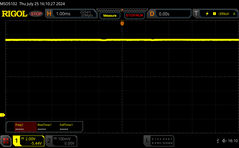
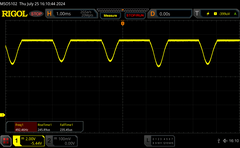
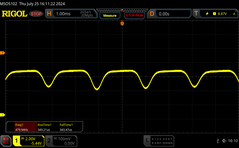
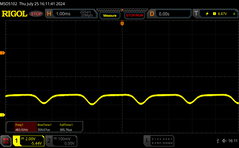
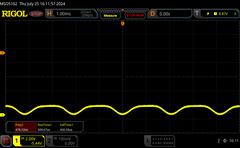
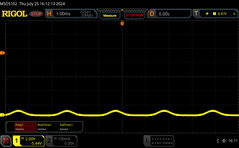

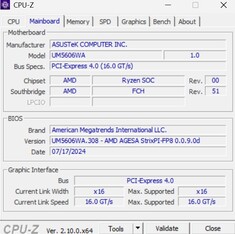
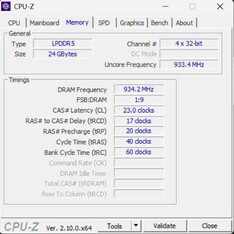
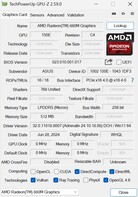
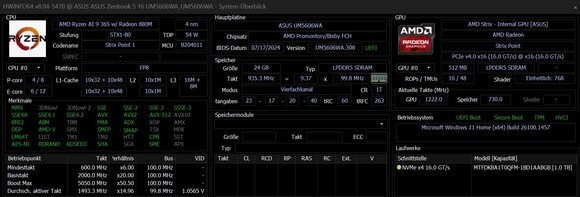
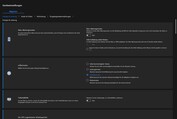
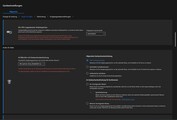
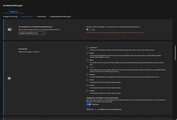


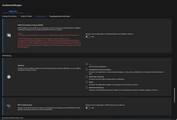

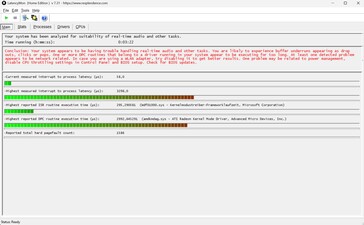


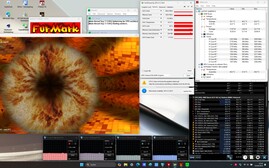
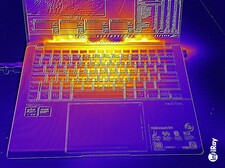
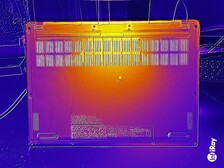
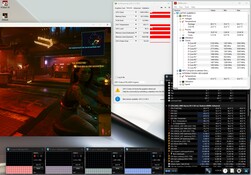
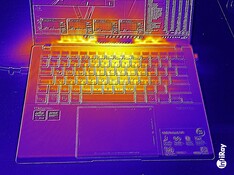
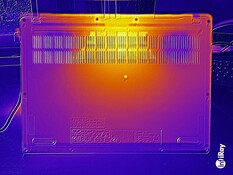
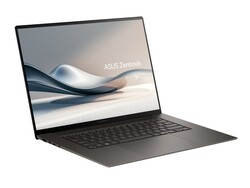
 Total Sustainability Score:
Total Sustainability Score: 
